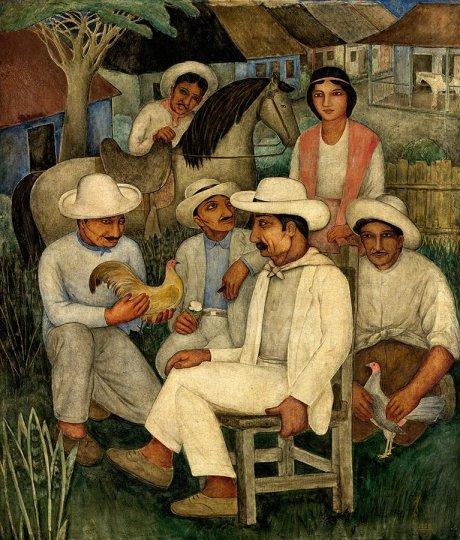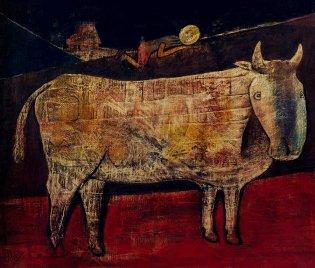Cuban painter and caricaturist. He graduated from the Academia de Alejandro in Havana in 1920 and lived in Paris from 1927 to 1929. There he studied at the Académie de la Grande Chaumière and abandoned academicism, developing a modernist ‘Cuban’ style, in which folkloric scenes of peasant life were depicted in a colorful, energetic, pseudo-naive manner reminiscent of Jules Pascin and Amedeo Modigliani. An outstanding work of this period is “Triumph of the Rumba” After a trip to Italy in the early 1930s, Abela began to paint canvases such as Guajiros, the result of his contact with italian medieval and renaissance art. His style underwent a radical change in the early 1950s and from this time until his death he painted small works that recalled in their use of fantasy the drawings of children as well as the works of Marc Chagall.
Abela was a noted caricaturist early in his career, which contributed to the informal, whimsical quality of his painting. His most famous cartoon series, “The Fool”, helped bring about the overthrow of the Machado regime in Cuba in 1933. Abela’s work is housed in private collections, as well as in the National Museum in Havana.





